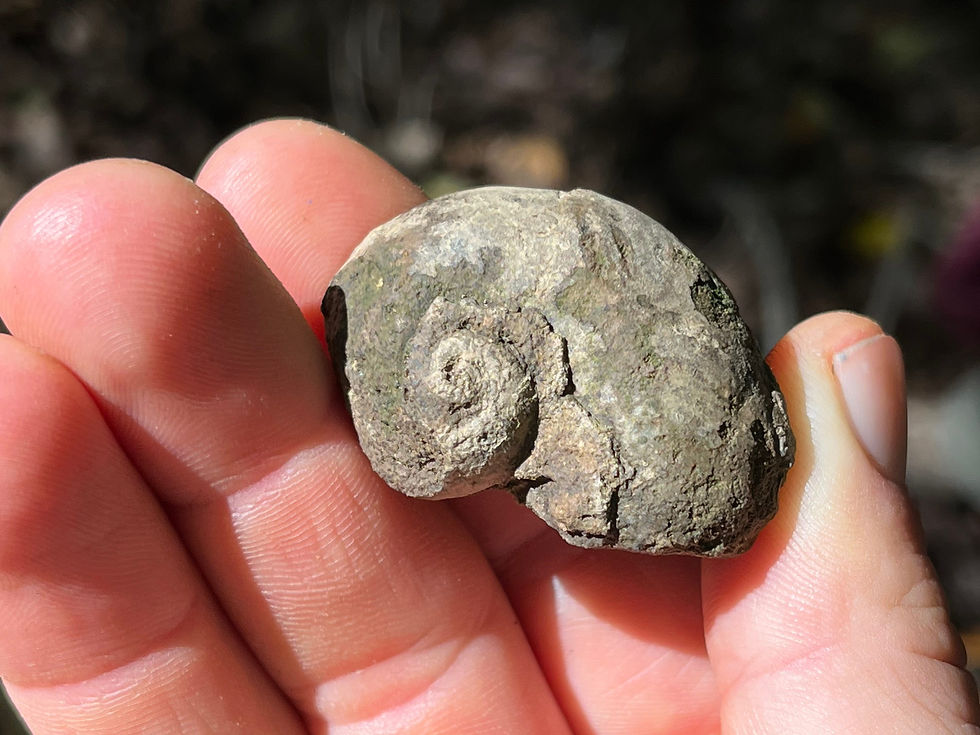Phaeolus schweinitzii and For the Love of Fungi
- Aubrey
- Oct 2, 2023
- 3 min read
Good evening, friends,
This week’s mushroom is the Dyer’s Polypore (Phaeolus Schweinitzii, fay-oh-lus shwine-itz-eee-eye). You can think of this as the sequel to the Woolly Velvet Polypore (Onnia tomentosa) from a few weeks ago since they’re similar and I found both recently, but a NEMF recap and an alien mushroom bumped back publication until today. After we learn about the mushroom I’ll also include some pictures from this past weekend at For the Love of Fungi in New Paltz, NY.

Fun Facts
An interesting study was conducted with P. schweinitzii to determine if fungi could have a role in sudden infant death syndrome (Reference 5). The thinking was that fungi posses the ability to volatize (to make airborne, turn from liquid to gas) harmful compounds like arsenic and antimony (a gray “metalloid” found in some matress covers). The study demonstrated that P. schweinitzii could volatize arsenic but not antimony when digesting two different substrates each laced with the respective substance. The researchers didn’t suspect the fungi to be a major cause of SIDS.
Hard to get more fun than talking about sudden infant death syndrome, I know that, but the fungus was also named after a notable mycologist. The species epithet “Schweinitzii” was named in recognition of Pennsylvania-born mycologist Lewis David (aka LD) von Schweinitz - an all-time name. The name Phaeolus comes from Ancient Greek and means “dark” or “obscure”.

Another fascinating feature is that the specimen I found was still in their developmental stage where they are bright yellow and all surfaces stain a dark brown. That brown stain is only temporary though as the fungus will turn yellow again after new growth forms on top of the bruises. The fungus exhibits indeterminate growth where the mushroom will absorb objects like branches and pine needles while it continues to grow.
This might be evident in the common name, but the fungus is used as a natural dye for wool and other textiles. The mushroom creates a range from dark brown to yellow hues depending on the mordant (a substance used to set the dyes on fabrics). Another name is the cow patty fungus because the mushroom turns brown and crumbly as it ages.

Ecology
The fungus is saprobic on dead roots of conifer trees and can be parasitic on living roots. The US Forest Service classifies the fungus as a root disease and considers it a threat to conifer plantations. The fungus causes a brown rot (which is uncommon as most fungi create a white rot) on the butt and roots of conifers. There is also a bolete, Buchwaldoboletus lignicola, that is parasitic on P. schweinitzii mycelium so see if you can find it when you find Phaeolus. A parasite for the parasite, checks and balances.

The mushrooms grow summer through fall in the northern hemisphere and can be found on every continent besides Antarctica. The mushrooms can grow just one lobe or possess several and grow over half a meter wide. With age the cap turns from yellow to orange where it becomes densely fuzzy before it fades to a dark brown. The mushrooms grow a stalk which allows them to shoot up from the underground roots and elevate a touch above the forest floor (for better spore dispersal).

For the Love of Fungi
The weekend started a bit wet but finished in the strong sun on Sunday. Thanks to Luke for cultivating such an excellent festival and thanks to Stone Mountain Farm for hosting. And thank you to everyone I saw and met there for making it such an inspiring event. Here are a handful of pictures from the weekend:





What a great weekend. If you’re free on Sunday October 15th, I’ll be presenting on Lichen of Central Park at the NYMS Fungus Festival.
That’s all she wrote,
Aubrey
References:
Kuo, M. (2022, February). Phaeolus schweinitzii. Retrieved from the MushroomExpert.Com Web site: http://www.mushroomexpert.com/phaeolus_schweinitzii.html
https://www.inaturalist.org/taxa/118084-Phaeolus-schweinitzii
Pearce RB, Callow ME, Macaskie LE. Fungal volatilization of arsenic and antimony and the sudden infant death syndrome. FEMS Microbiol Lett. 1998 Jan 15;158(2):261-5. doi: 10.1111/j.1574-6968.1998.tb12830.x. PMID: 9465397.
